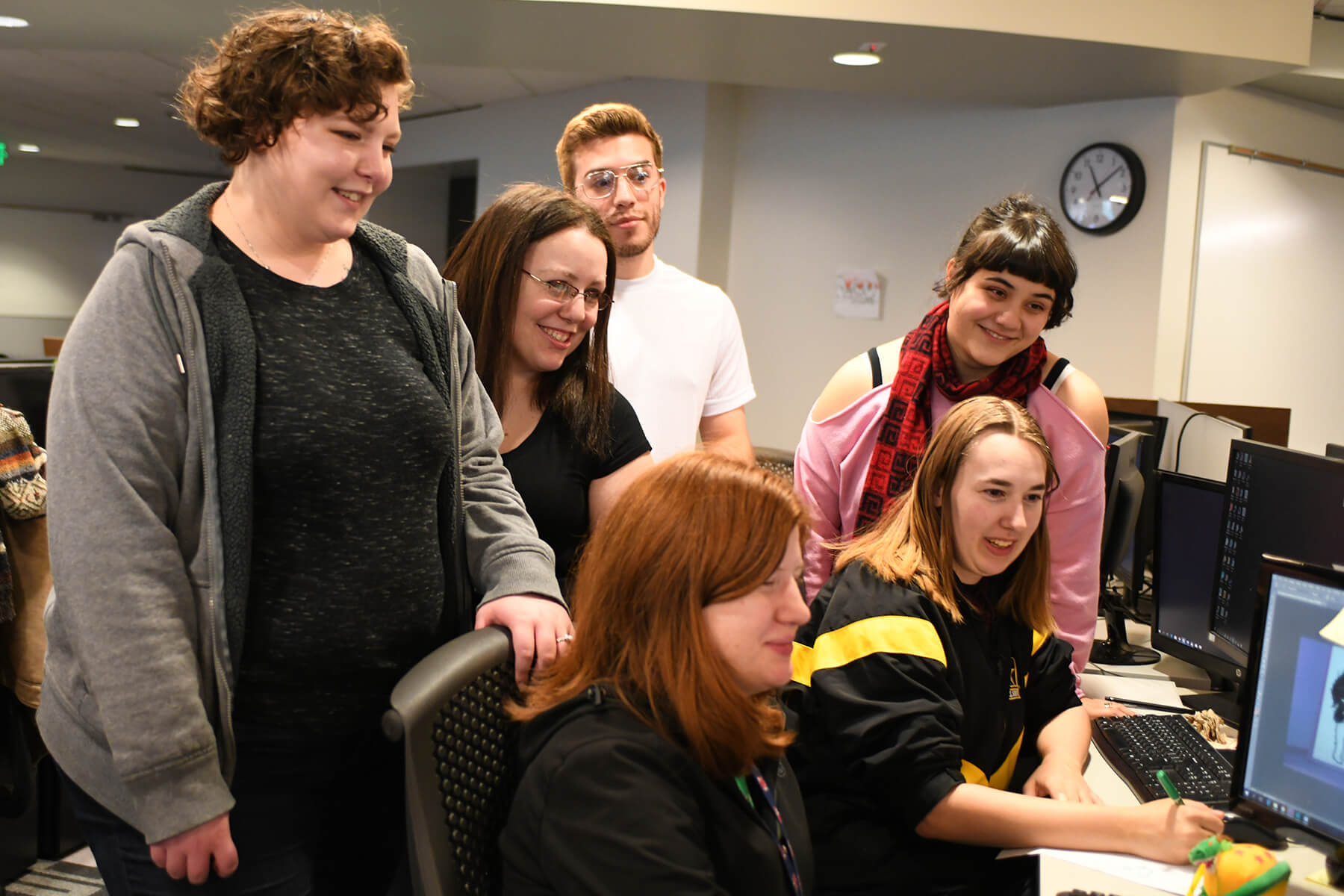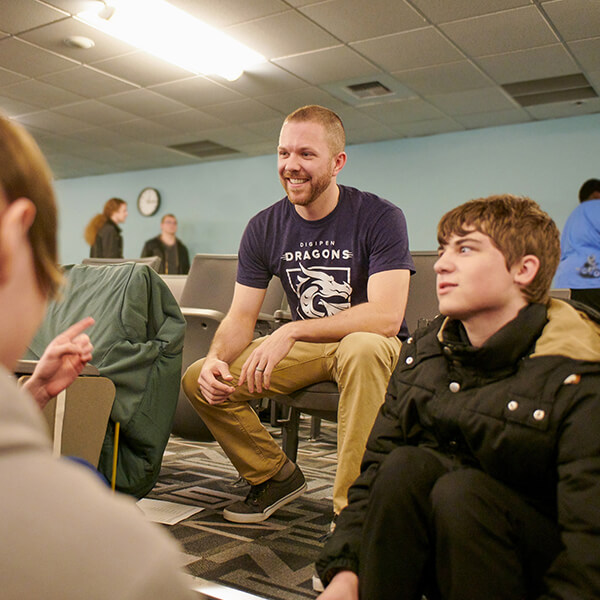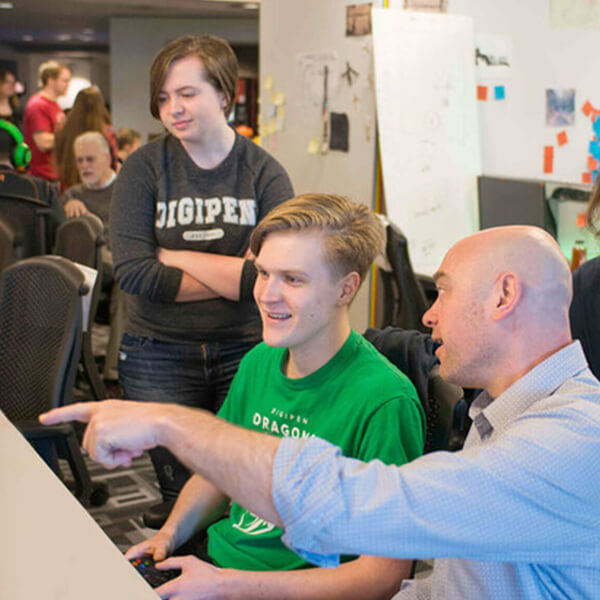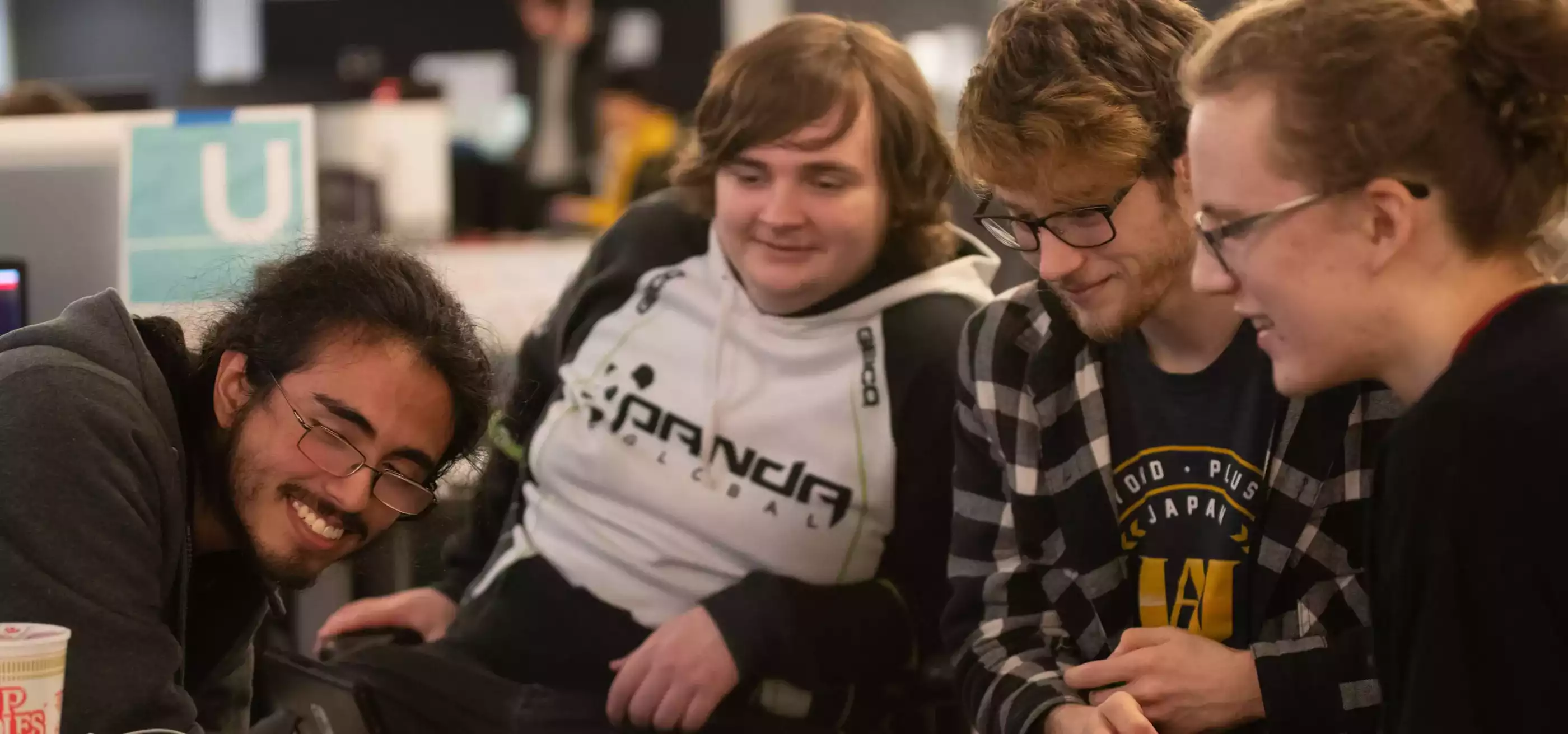Article updated on October 14, 2025.
Working on multidisciplinary, collaborative game team projects is a cornerstone of all four years of a DigiPen education. Read on for a breakdown of sophomore year game projects.
Sophomore year is a momentous one for game projects. For computer science (CS) students, it’s the first time they dedicate an entire school year to building a single, original game. For art, design, and audio students, it’s their first hands-on introduction to multidisciplinary development, starting with short, structured games before tackling a semester-long original project.
“The goal of sophomore CS game projects is to learn how to work on a year-long team project and ship a game,” says sophomore computer science game project instructor Ellen Beeman. “By the end of sophomore year, students should have a good sense of what roles or types of teams work well for them, and how to deal with inevitable team issues or unexpected challenges.”

That learning process comes with an ambitious checklist. CS students are expected to build their own custom C++ game engine, which powers the original 2D game they develop over the year.
Meanwhile, art, design, and audio students dive into their first multidisciplinary collaborations in a separate course. “The goal is to learn to work with other people who don’t think like you by making games together,” says sophomore multidisciplinary game project instructor Jeremy Holcomb.
The first semester eases students in. After a one-week solo project, they join five- to six-person teams to build two small 3D games in the Unreal Engine, each developed over five weeks with unique constraints. “For one game, the goal is starting with the art and then working on the design. For the other, it’s vice versa,” Holcomb explains. “The purpose is to recognize that those two ways of working are quite different.”
By the second semester, students regroup into larger teams of about 10 and take on an original 3D Unreal project. “Within the 15-week development scope of the second semester, they have a lot more control over what they want that project to look like,” Holcomb says. “The whole process is about prototyping, playtesting, iterating on, and developing their game.” With that experience, students also learn who they work best with and where they want to focus their skills.
Throughout the year, instructors play a hands-on role. CS teams meet frequently with mentors for check-ins and milestone reviews. “The instructors do a lot of individual mentoring, but we also have specific times in the semester where we all meet with a team to see their progress,” Beeman says.
Multidisciplinary teams follow a similar rhythm, providing instructor feedback throughout development. “There are points where we’ll and say, ‘you should be code complete at this point,’ or ‘you shouldn’t be adding new features at this point,’” Holcomb says. “We try to make sure they’re staying in scope for the 15 weeks they have.” Their final target is a polished, 10-minute playable experience that could serve as a meaningful vertical slice of a much larger game.
Related articles in this series

Previous Article

Next Article
